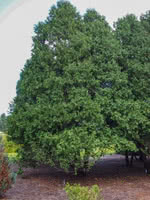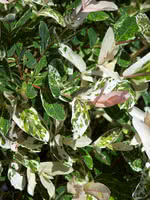Mon-Fri 9am - 5pm Mountain time
Cart reopens in November
Subscribe to our email list
to stay updated
Eastern White Cedar (Arborvitae) vs Dappled Willow
Thuja occidentalis
Salix integra Hakuro-Nishiki
SOLD OUT
NOT AVAILABLE THIS SEASON
Eastern White Cedar is a slender growing conifer often used as a decorative tree or a hedge. This tree is an effective privacy screen even in winter and a great long term solution to urban crowding or a drab yard.
Dappled Willow is a small, cold hardy shrub with unusual beauty. Its leaves are pink in spring, maturing into variegated shades of pink, white and green. After losing their leaves in autumn, the stems maintain a rich red color throughout the winter. For a splash of color, try Dappled Willow on its own or as a hedge.

